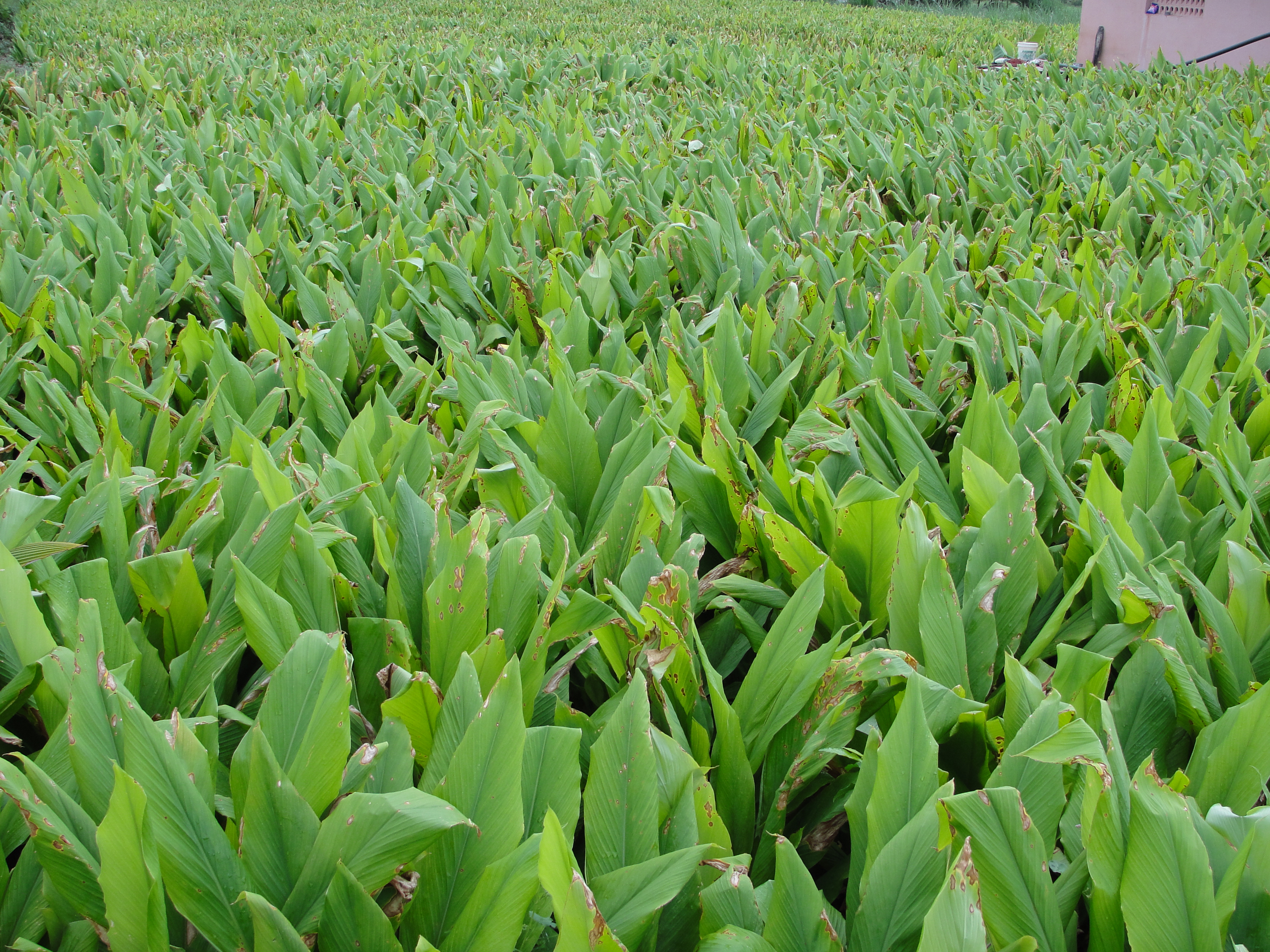When not used fresh, the rhizomes are boiled for about 30–45 minutes and then dried in hot ovens, after which they are ground into a deep orange-yellow powder commonly used as a spice in Indian cuisine and even curries, for dyeing, and to impart color to mustard condiments. One active ingredient in it is curcumin. It has a distinctly earthy, slightly bitter, slightly hot peppery flavor and a mustardy smell. Curcumin may treat cancer, Alzheimer's disease, diabetes, allergies, arthritis and other chronic illnesses.
Turmeric feild

Known as haldi, turmeric has been used in India for thousands of years and is a major part of Siddha medicine. It was first used as a dye and then later for its medicinal properties.

In 1995, a U.S. patent on turmeric was awarded to the University of Mississippi Medical Center, specifically for the “use of turmeric in wound healing.” This patent also granted them the exclusive right to sell and distribute turmeric. Two years later, an Indian government organisation, The Council of Scientific and Industrial Research, filed a complaint on the grounds of piracy. They argued that this usage has been documented and been in practice for thousands of years in India. The patent was subsequently removed as it was proven to be anti-competitive.
In China, the flowering time is usually in August. Terminally on the false stem there is a 12 to 20 cm long inflorescence stem containing many flowers. The bracts are light green and ovate with a length of 3 to 5 centimeters to oblong with a blunt upper end.
At the top of the inflorescence stem bracts are present on which there are no flowers, these are, white to green and sometimes tinged reddish-purple and its upper end is tapered.
No comments:
Post a Comment